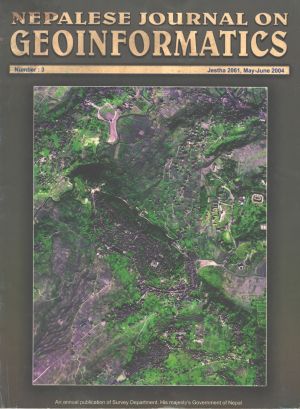National Geographic Information Infrastructure in Nepal for Strengthening Planning and Resource Management
DOI:
https://doi.org/10.3126/njg.v3i1.51317Keywords:
NGII, Nepal, resource managementAbstract
Nepal has a tremendous potentiality of water-resources ranking only second in the world and it has also a rich natural wealth like biodiversity, lofty Himalayas, scenic valleys and mountains among others. It has a hardworking and patriotic workforce. However, it is limited by heavily diverse topography and fragile geological conditions coupled with extensive poverty and abundant illiteracy. The thrust of the development problem in Nepal is “poor management”. Simply said, management is a cycle of planning, implementation, monitoring/evaluation and re-planning. One of the weaknesses of the Nepalese management process is the lack of adequate geographic information in decision-making thus resulting in poor-management. To support this gap, His Majesty’s Government of Nepal initiated National Geographic information Infrastructure Programme (NGIIP) since 2002. This programme is the extension of the digital mapping programme of Survey Department, which was initiated in 1996.
Nepal is a member of the Global Mapping community. The NGII programme will support in the development of a spatial data infrastructure and a geographic information system at the national level. NGII Programme has the overall objectives of strengthening planning and resource management in Nepal and its specific objectives are to develop a platform to facilitate data sharing among Survey Department, Central Bureau of Statistics and participating agencies. As part of its contribution to the NGIIP, Survey Department provides spatial data ranging from 1:25,000 to 1:1Million. To facilitate the success of the NGII initiatives several approaches have been undertaken. Some of them are: the identification of the key players and developing a stakeholders’ institutional coordination mechanism, the situational analysis and needs assessment, developing an implementation strategy, and conceptualisation of a NGII centre of excellence for promoting sustainability.
The programme has multiple facets like: fundamental- and meta- database production, technology installation and human resource development, and institution building components including standards and processes. The details are explained. Least developed countries like Nepal are entangled with the vicious circle of lack of information, poor planning, poor performance, and subsequent lack of resources for additional funding for information. A strong will and commitment is necessary to make a breakthrough. This is a time in Nepal, when a breakthrough is underway with the launching of a NGII programme. The programme has a promising future; but it being on a very initial phase, its effectiveness cannot be evaluated as yet.




